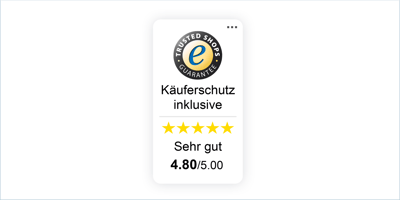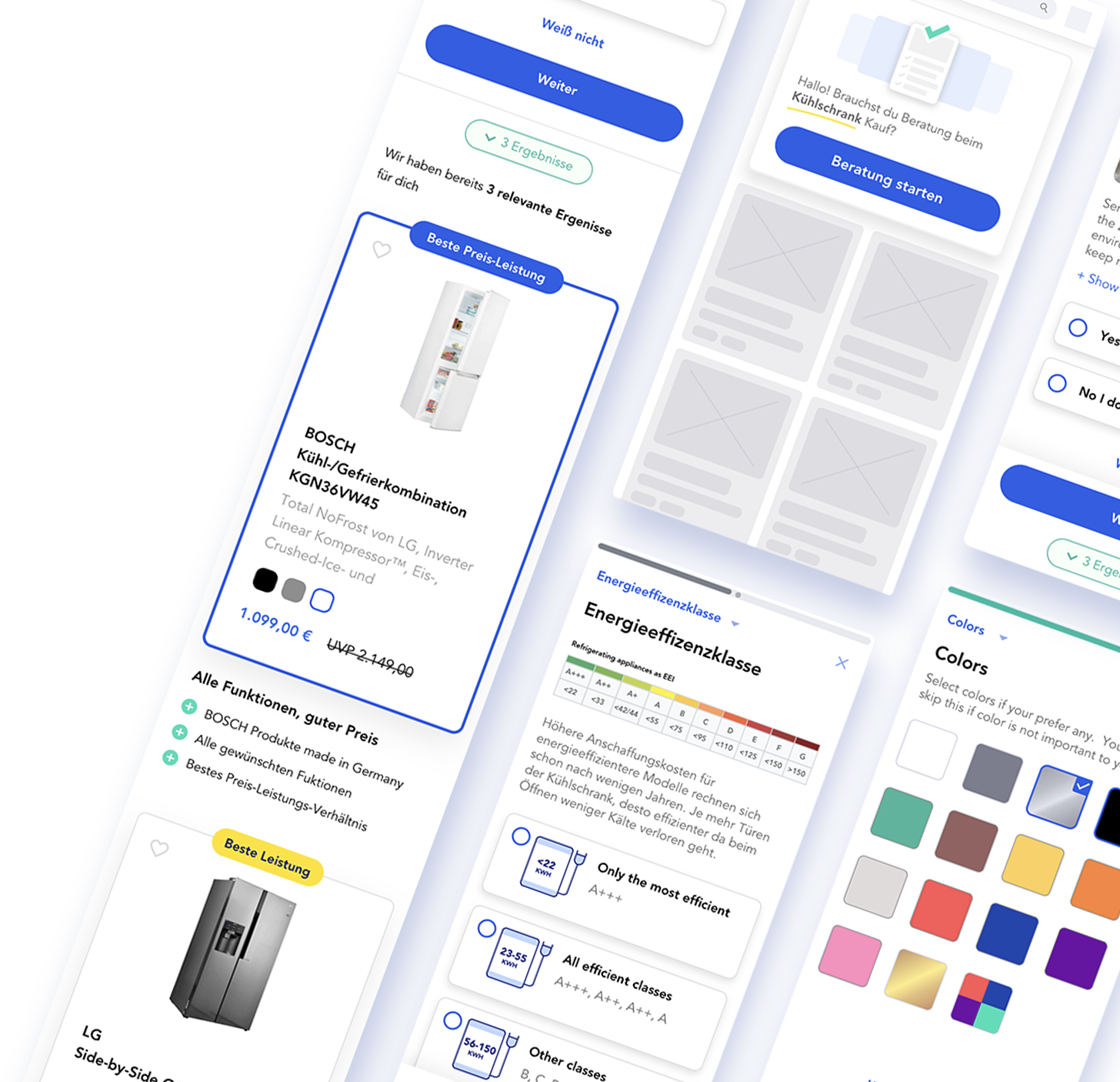The customer journey in e-commerce describes 5 different sections, that a customer goes through in the online shop – from the first perception of the products to the conclusion of the purchase. An easy to navigate and graphically appealing "customer journey" has a positive effect on conversion, as well as your sales.
This is not just about marketing, the quality of the products, as well as the price-performance ratio, but rather about the experience that your customers have in the online shop. The buying decision is therefore often emotionally influenced, it has not only to do with the offer, but also with the feeling which your customer connects with your presentation and the navigation of the web shop.
A positive customer experience during the customer journey in e-commerce causes faster filled shopping baskets! In our article, we give you 5 important tips for an excellent user experience, in order to inspire your customers not only with your products, but also with the experience in the entire buying process!
The Customer Journey per definition
In order to offer your customers the optimal customer journey, there should be five elements:
✔ Inspiration
✔ Advice
✔ Orientation
✔ Connection
✔ Entertainment
The more precisely these elements are defined in your online shop, the better your future customers will feel at home with you, easily find the right item and thus be able to make faster purchasing decisions.
The customer journey, i.e. a customer's journey through the entire purchase experience, is usually divided into 5 steps or 5 touchpoints in online marketing. Although there are often more than just five points of contact before a consumer decides on a product, five important sections of the customer journey definition are included.
Your customers don't just want to buy a product, they want to build a relationship with your company. This includes, in particular, optimal advice (such as through a digital advisor) with Guided Selling, the perception of the needs of customers, as well as inspiring and entertaining navigation through the product range.
The 5 phases of the customer journey in e-commerce
The five phases of the customer journey – also called e-commerce customer journey map - can be represented as follows:
- First contact with the brand and products (attention)
- Consider purchase (research)
- Decision (purchase)
- Experience with the brand (service / benefit)
- Customer loyalty (loyalty)
In the first phase of the customer journey, a customer perceives your webshop for the first time. This can be, for example, through an ad on social media (directly), through a recommendation from friends (indirectly) or through a search result on Google . The bond with the company is not very strong so far.
In the second phase of the Digital Customer Journey, the customer shows interest in your offers and considers a purchase. This includes researching the company through reviews from other customers (e.g. via Trusted Shops), comparing articles, collecting information about the price-performance ratio and browsing the webshop and social media. This is where good content is important, because the easier it is for customers to find suitable information about your products, the faster they can decide to buy.

In the third phase of the customer journey on the e-commerce website, a decision is made. Obtaining information about the products leads to a buying! The product is not only eyed or placed in the shopping cart, but also ordered!
In the fourth phase of the online customer journey, customers gain their first experience with the article. This is particularly about positive experience with the quality, simplicity of handling, as well as with the customer service, should problems arise in the use. It goes without saying that the brand keeps its promises and that your customer service can solve difficulties in use or make the exchange of articles possible within a very short time.
In the fifth phase of a customer's journey through the online shop, it goes one step further, namely to recommend your products! If your new customers have had excellent experiences with the products, they are happy to recommend them to others. New customers thus become loyal customers and at the same time ambassadors of the brand. You enjoy recommending your company to friends and acquaintances.
An example for a Customer Journey
Let's take Marion as an example, who has been interested in a new jacket from Adidas for a long time. She would especially like to buy a special edition. A friend tells her about a large online shop that currently offers deals for well-known brands. (Phase 1)
Marion visits the webshop and finds her desired jacket in special edition by chance! Fortunately, the jacket is also offered at a reduced price and thus offers a better price than in the Adidas shop, which Marion also visits for comparison. (Phase 2)
Marion decides on the jacket in the online shop and completes the purchase process. The shipment takes place within 24 hours and one day later she can already wear the jacket. (Phase 3)
She puts the jacket on almost every day and notices how robust and soft the material is. Marion is extremely satisfied with your purchase and is considering ordering more things in the online shop, as she had a flyer with a discount code in her package. (Phase 4)
Marion buys again at the shop and has the same experience with the products: The shipping is fast, the quality of the goods is extremely high and she is happy about another voucher for the next purchase. Marion posts on Instagram about her finds and tags the online shop in her post. She also encourages her friends to shop there as well. (Phase 5)
Optimize the customer journey on the e-commerce website
In order to make the customer journey as pleasant as possible, you first want to build trust with your customers, facilitate product research in the webshop and product selection, convert first-time customers into loyal customers (e.g. through special promotions or loyalty points), and increase the willingness to buy.
However, the online product jungle is often overwhelming and doesn't always make it easy for prospects to find what they're looking for. A total of 54% of consumers abandon the search in the online shop because they do not immediately find the desired product. Often this is due to a complicated navigation of the website, an insufficient search function, or a complicated check-out process.
A digital product advisor provides a remedy here. Through suitable product suggestions, which are determined by targeted questions (AI) and appealing graphics, the conversion rate can increase by up to 70%! A full 25% of online customers have also expressed that they are happy to receive product suggestions.

5 Tips for an excellent user experience in the customer journey
Above all, you can create an excellent user experience by personalizing the customer journey. In the following points, we will discuss the 5 points mentioned at the beginning in detail.
1. Inspiration
Inspire your customers with appealing graphics, suitable product suggestions and easy navigation of the webshop! Place a call to action (CTA) for the purchase so that your customers are encouraged to purchase your offers.
2. Advice
If your webshop has numerous products, the customer quickly loses himself in diversity. The digital advice is important here! Don't be afraid to take your customers by the hand and guide them from visiting the landing page to selecting products to completing the purchase!
3. Orientation
Orientation Counselling also includes orientation. The better your customers can orient themselves in your e-commerce shop, the faster you will find your desired product. Here advice and a clearly defined search function (e.g. Faceted Search) plays an important role too.
4. Connection
Your customers want to feel part of the brand philosophy instead of shopping in an anonymous store. Consumers want to connect online as well as offline. Here, too, the digital sales advisor is an excellent tool for responding to customers' needs in real time and thus personalizing the buying experience.
5. Entertainment
Bring more entertainment to the customer journey by engaging your customers in a playful way and using cool graphics that make the buying process exciting. With the help of artificial intelligence and playbooks, the digital purchase advisor responds to customer requests, shows suitable images for the products and quickly evaluates complex information. This makes the product search a unique experience.
We hope, you were inspired by our article about the Customer journey in e-commerce and the 5 tips for an excellent user experience!
To learn more about our success with Guided Selling and increased usability in the online shop, download our case study with fahrrad.de.